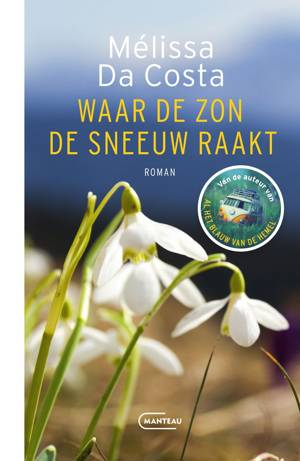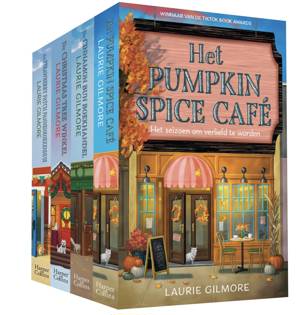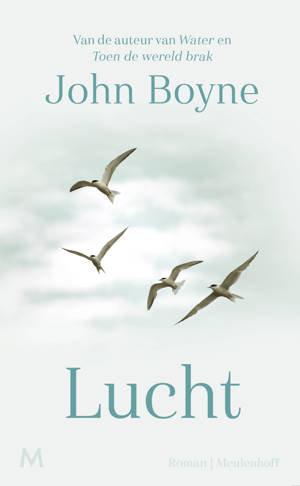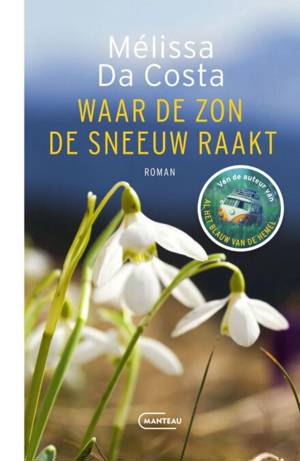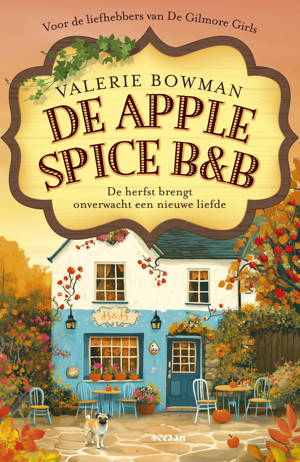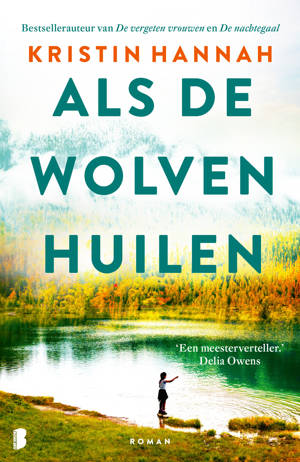
- Afhalen na 1 uur in een winkel met voorraad
- Gratis thuislevering in België vanaf € 30
- Ruim aanbod met 7 miljoen producten
- Afhalen na 1 uur in een winkel met voorraad
- Gratis thuislevering in België vanaf € 30
- Ruim aanbod met 7 miljoen producten
Onze literatuur & romans: Vertaalde literatuur
Wat je leest, maakt ons niet uit. Dat je leest des te meer. Dompel jezelf onder in een zee van literatuur en romans, waar elk blad een nieuw avontuur onthult. Verlies je in de diepgaande thema’s van onze literaire boeken, of laat je meeslepen door de nieuwste romans. Vind hieronder het boek waar je de rug helemaal krom van wil lezen, van literair tot populair.
Elk van onze romans kan je thuis laten leveren of afhalen in een Standaard Boekhandel bij jou in de buurt. Toch liever een e-book? Klik hier om naar alle e-books in deze categorie te gaan.
Vertaalde literatuur top 10
-
Het ultieme geheim
Dan Brown
- Paperback | Nederlands | Robert Langdon | nr. 6
-
Waar de zon de sneeuw raakt
Mélissa Da Costa
- Paperback | Nederlands
-
Het laatste lied
Lucinda Riley
- Paperback | Nederlands
-
Het laatste lied
Lucinda Riley
- E-book | Nederlands
-
Al het blauw van de hemel
Mélissa Da Costa
- Paperback | Nederlands
-
De tijd van loslaten
Kristin Hannah
- Paperback | Nederlands
-
Het ultieme geheim
Dan Brown
- E-book | Nederlands | Robert Langdon
-
De Gingerbread Bakkerij
Laurie Gilmore
- Paperback | Nederlands | Dream Harbor serie | nr. 5
-
Cirkel der dagen
Ken Follett
- Hardcover | Nederlands
-
Dream Harbour-pakket
Laurie Gilmore
Populaire keuzes
Trending
Alleen bij Standaard Boekhandel
Nieuw
-
Het laatste lied
Lucinda Riley
- Paperback | Nederlands
-
De geheimen van Sophie
Marie Lacrosse
- Paperback | Nederlands | Het Weense koffiehuis | nr. 3
-
Lucht
John Boyne
- Hardcover | Nederlands | Elementen-cyclus | nr. 4
-
Winter in de Cranberry Inn
Barbara Josselsohn
- Paperback | Nederlands
-
De Cherry Blossom Bookshop
Takuya Asakura
- Paperback | Nederlands
-
Wat ik haar niet vertelde
Sigrid Bousset
- Paperback | Nederlands
Pre-order nu
-
Queen Esther
John Irving
- Hardcover | Nederlands
-
Het bal in Versailles
Danielle Steel
- Paperback | Nederlands
-
Oosterlicht
Lorna Cook
- Paperback | Nederlands | Vier windstreken | nr. 1
-
Verdachten
Danielle Steel
- Paperback | Nederlands
-
Flora's erfenis
Clarisse Sabard
- Paperback | Nederlands | De Lelievilla | nr. 1
-
De verloren ringen
Nora Roberts
- Paperback | Nederlands | Verloren bruid | nr. 3
Vertaalde literatuur
-
Het ultieme geheim
Dan Brown
- Paperback | Nederlands | Robert Langdon | nr. 6
- De nieuwe thriller van de wereldwijde bestsellerauteur Dan Brown. Zijn meest ingenieuze thriller tot nu toe – een razendsnel en uitdagend meesterwerk ... Lees meer
€ 29,99Levering 1 à 2 werkdagen Afhalen in de winkel na 1 u.€ 29,99Levering 1 à 2 werkdagen Afhalen in de winkel na 1 u. -
Waar de zon de sneeuw raakt
Mélissa Da Costa
- Paperback | Nederlands
- Philippe is veertig, commercieel directeur, getrouwd en vader van twee kinderen. Ambre is twintig, heeft niets en niemand. Behalve hem.Wanneer ze, ove... Lees meer
€ 25,99Levering 2 à 3 werkdagen Afhalen in de winkel na 1 u.€ 25,99Levering 2 à 3 werkdagen Afhalen in de winkel na 1 u. -
Het laatste lied
Lucinda Riley
- Paperback | Nederlands
- In Het laatste lied van bestsellerauteur Lucinda Riley wordt een muzikale droom verstoord door roem en geheimen. Een meeslepende roman over familie, l... Lees meer
€ 24,99Levering 2 à 3 werkdagen Afhalen in de winkel na 1 u.€ 24,99Levering 2 à 3 werkdagen Afhalen in de winkel na 1 u. -
Het laatste lied
Lucinda Riley
- E-book | Nederlands
- In Het laatste lied van bestsellerauteur Lucinda Riley wordt een muzikale droom verstoord door roem en geheimen. Een meeslepende roman over familie, l... Lees meer
€ 14,99Onmiddellijk beschikbaar€ 14,99Onmiddellijk beschikbaar -
Al het blauw van de hemel
Mélissa Da Costa
- Paperback | Nederlands
- Nadat bij Emile jong-alzheimer werd vastgesteld, besluit hij het ziekenhuis en het medeleven van zijn familie en vrienden te ontvluchten. Stiekem koop... Lees meer
€ 24,99Levering 1 à 2 werkdagen Afhalen in de winkel na 1 u.€ 24,99Levering 1 à 2 werkdagen Afhalen in de winkel na 1 u. -
De tijd van loslaten
Kristin Hannah
- Paperback | Nederlands
- De tijd van loslaten is het ultieme verhaal over opoffering en de verschillende vormen die echte liefde aan kan nemen Liam Campbell is radeloos als zi... Lees meer
€ 15,00Levering 2 à 3 werkdagen Afhalen in de winkel na 1 u.€ 15,00Levering 2 à 3 werkdagen Afhalen in de winkel na 1 u. -
Het ultieme geheim
Dan Brown
- E-book | Nederlands | Robert Langdon
- 'Dan Brown is terug, en hoe. Dit is het hogere thrillerschrijven.' de Volkskrant. Zijn meest ingenieuze thriller tot nu toe: een razendsnel en uitdage... Lees meer
€ 20,99Onmiddellijk beschikbaar€ 20,99Onmiddellijk beschikbaar -
De Gingerbread Bakkerij
Laurie Gilmore
- Paperback | Nederlands | Dream Harbor serie | nr. 5
- Van Laurie Gilmore, de internationale bestsellerauteur van Het Pumpkin Spice Café, komt een nieuwe, heerlijke small town romance: De Gingerbread Bakke... Lees meer
€ 15,00Levering 2 à 3 werkdagen Afhalen in de winkel na 1 u.€ 15,00Levering 2 à 3 werkdagen Afhalen in de winkel na 1 u. -
Cirkel der dagen
Ken Follett
- Hardcover | Nederlands
- Ken Follett neemt zijn lezers mee naar het ontstaan van het indrukwekkende Stonehenge Seft, een getalenteerde vuursteenmijnwerker, loopt door de Grote... Lees meer
€ 29,99Levering 2 à 3 werkdagen Afhalen in de winkel na 1 u.€ 29,99Levering 2 à 3 werkdagen Afhalen in de winkel na 1 u. -
Dream Harbour-pakket
Laurie Gilmore
- Geniet van de cosy small town romance in de eerste vier delen van de populaire Dream Harbor -serie van Laurie Gilmore. Het Pumpkin Spice Café : Wannee... Lees meer
€ 40,00Levering 2 à 3 werkdagen Afhalen in de winkel na 1 u.€ 40,00Levering 2 à 3 werkdagen Afhalen in de winkel na 1 u. -
De dagen die komen
Mélissa Da Costa
- Paperback | Nederlands
- Amande had nooit gedacht dat pijn zo intens kon zijn. Ze trekt zich terug in een afgelegen huis in Auvergne om haar verdriet ten volle te beleven.De d... Lees meer
€ 22,99Levering 1 à 2 werkdagen Afhalen in de winkel na 1 u.€ 22,99Levering 1 à 2 werkdagen Afhalen in de winkel na 1 u. -
Waar de zon de sneeuw raakt
Mélissa Da Costa
- E-book | Nederlands
- Philippe is veertig, commercieel directeur, getrouwd en vader van twee kinderen. Ambre is twintig, heeft niets en niemand. Behalve hem.Wanneer ze, ove... Lees meer
€ 15,99Onmiddellijk beschikbaar€ 15,99Onmiddellijk beschikbaar -
Regretting you
Colleen Hoover
- Paperback | Nederlands
- De emoties lopen hoog op... 'Regretting you' is de Nederlandse editie van Colleen Hoovers aangrijpende moeder-dochterroman Lees meer
€ 14,99Levering 2 à 3 werkdagen Afhalen in de winkel na 1 u.€ 14,99Levering 2 à 3 werkdagen Afhalen in de winkel na 1 u. -
De geheimen van Sophie
Marie Lacrosse
- Paperback | Nederlands | Het Weense koffiehuis | nr. 3
- Van de boeken van Marie Lacrosse zijn al ruim 70.000 exemplaren verkocht in Nederland en Vlaanderen Na de dood van haar oom runt Sophie met groot succ... Lees meer
€ 22,99Levering 2 à 3 werkdagen Afhalen in de winkel na 1 u.€ 22,99Levering 2 à 3 werkdagen Afhalen in de winkel na 1 u. -
Dromen van een nieuw begin
Corina Bomann
- Paperback | Nederlands | Rozenhaag | nr. 1
- Dompel je onder in het Zweden van de vroege twintigste eeuw Het is 1910 in het Zweedse stadje Karlskrona. Marlene leeft in armoede en wordt geschuwd d... Lees meer
€ 22,99Levering 1 à 2 werkdagen Afhalen in de winkel na 1 u.€ 22,99Levering 1 à 2 werkdagen Afhalen in de winkel na 1 u. -
Groter dan de hemel
Virginie Grimaldi
- Paperback | Nederlands
- Het nieuwe boek van Virginie Grimaldi, voor de lezers van Al het blauw van de hemel van Mélissa Da Costa en Ga als een rivier van Shelley Read Elsa en... Lees meer
€ 18,99Levering 2 à 3 werkdagen Afhalen in de winkel na 1 u.€ 18,99Levering 2 à 3 werkdagen Afhalen in de winkel na 1 u. -
Onder de sterren
Virginie Grimaldi
- Paperback | Nederlands
- Voor de lezers van Al het blauw van de heme l. Anna’s leven staat op een kantelpunt. Ze heeft torenhoge schulden, haar dochters van 17 en 12 kampen me... Lees meer
€ 18,99Levering 1 à 2 werkdagen Afhalen in de winkel na 1 u.€ 18,99Levering 1 à 2 werkdagen Afhalen in de winkel na 1 u. -
De Argentijnse dochter
Soraya Lane
- Paperback | Nederlands | De verloren dochters | nr. 6
- Londen, heden. Rose ontvangt een mysterieus doosje met een houten figuurtje van een paard en een stukje glanzende zijde, aanwijzingen die werden achte... Lees meer
€ 18,99Levering 1 à 2 werkdagen Afhalen in de winkel na 1 u.€ 18,99Levering 1 à 2 werkdagen Afhalen in de winkel na 1 u. -
Lucht
John Boyne
- Hardcover | Nederlands | Elementen-cyclus | nr. 4
- Het afsluitende, ook los te lezen deel van Boynes Elementen -cyclus: net als in Water , Aarde en Vuur stelt Boyne in Lucht intrigerende vragen over me... Lees meer
€ 20,99Levering 2 à 3 werkdagen Afhalen in de winkel na 1 u.€ 20,99Levering 2 à 3 werkdagen Afhalen in de winkel na 1 u. -
De Apple Spice B&B
Valerie Bowman
- Paperback | Nederlands | Honeycrisp | nr. 1
- Cozy en spicy small town romance voor de lezers van Het Pumpkin Spice Café Wanneer Ellie haar baan als event planner én haar vriendje in de stad kwijt... Lees meer
€ 15,99Levering 2 à 3 werkdagen Afhalen in de winkel na 1 u.€ 15,99Levering 2 à 3 werkdagen Afhalen in de winkel na 1 u. -
Als de wolven huilen
Kristin Hannah
- Paperback | Nederlands
- Net zo onvergetelijk als Daar waar de rivierkreeften zingen en Ga als een rivier In het ruige noordwesten van Amerika ligt het Olympic National Fores... Lees meer
€ 15,00Levering 2 à 3 werkdagen Afhalen in de winkel na 1 u.€ 15,00Levering 2 à 3 werkdagen Afhalen in de winkel na 1 u. -
Winters romancepakket
Susan Wiggs, Sherryl Woods, Brenda Novak
- Paperback | Nederlands
- Geniet van drie winterse romantische verhalen van Susan Wiggs, Brenda Novak en Sherryl Woods. Winter in Avalon : Brenda is in haar hondenopvangbusje o... Lees meer
€ 30,00Levering 2 à 3 werkdagen Afhalen in de winkel na 1 u.€ 30,00Levering 2 à 3 werkdagen Afhalen in de winkel na 1 u. -
Het ultieme geheim
Dan Brown
- Hardcover | Nederlands | Robert Langdon | nr. 6
- 'Dan Brown is terug, en hoe. Dit is het hogere thrillerschrijven.' de Volkskrant. Zijn meest ingenieuze thriller tot nu toe: een razendsnel en uitdage... Lees meer
€ 39,99Levering 2 à 3 werkdagen Afhalen in de winkel na 1 u.€ 39,99Levering 2 à 3 werkdagen Afhalen in de winkel na 1 u. -
De Italiaanse herinnering
Karen Swan
- Paperback | Nederlands
- De Italiaanse herinnering van Karen Swan speelt zich af in 1974, waar Elena Damiani een luxueus leven leidt. Ze heeft op 26-jarige leeftijd al drie hu... Lees meer
€ 22,99Levering 1 à 2 werkdagen Afhalen in de winkel na 1 u.€ 22,99Levering 1 à 2 werkdagen Afhalen in de winkel na 1 u.







